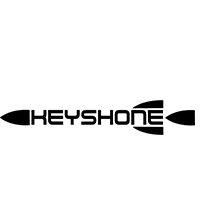
Table of Contents
21 Remarkable Unknown Facts About Voyager 1 and 2
#1
Voyager 1 and 2 space crafts are launched by NASA to explore the outer planets in our solar system. The twin space craft’s mission extended three times. Now the forty-year-old space crafts are continuing its historical journey in the boundary of heliosphere in interstellar space.
Must Read: 9 Amazing Facts About ISRO 104 Satellite Launch
#2
Voyager 1 and 2 space crafts are the most distant human-made object. It passed the boundary of our solar system and exploring the outer space.The Voyager space crafts were built at NASA’s Jet propulsion Laboratory in Southern California.
#3
NASA uses the gravity assistance method in the spacecraft.The gravity assistance helps the spacecraft to reach the distant planets in the least time and fuel.
#4
The Voyager 2 launched in 1977 August 20th and the Voyager 1 spacecraft launched after two weeks on September 5th.Both space crafts are launched from NASA’s Kennedy Space Centre. Everyone expected that the mission will end in 1981 but the mission is still continuing.
#5
Initially, the project name of Voyager 1 and 2 space crafts was “Mariner Jupiter/Saturn 1977”.The project started in 1972 to utilize the advantage of the rare occurrence planetary alignment in 1977. The missions initially planned to study the planetary alignment of Jupiter and Saturn.
#6
Voyager 2 continues to Uranus and Neptune after the Saturn fly-by.It was the only space crafts explored the Uranus and Neptune.Now the Voyager 1 traveled 2000 core kilometer from the earth and Voyager 2 is at 1700 core kilometers from earth.
#7
The Voyager 1 and 2 spacecrafts are tracked using Hubble space telescope.The signals from the Voyager 1 and 2 space crafts are getting weak day by day. The signals take 13 hours to travel one side at a speed of light.
#8
The Voyager 1 spacecraft enters the interstellar space in 2013. It is expecting that the Voyager 1 and 2 space crafts can send signals for next 10 years. After that information about the space crafts position can be retrieved by using our space telescopes.
#9
The Voyager 1 and 2 have sixteen hydrazine thrusters, Gyroscope to maintain the axis of the spacecraft, and a radio antenna facing earth.
Must Read: How to Track International Space Station from Earth
#10
To maintain the position of the antenna the space crafts are taking the sun and the Canopus star as the reference.The system includes eight backup thrusters and a reserve storage of important equipment.
Amazing Scientific Facts Revealed By Voyager 1 and 2
#11
For 20 years the space crafts are giving amazing information about the atmosphere and the structure of the hydrogen clouds in the interstellar space.
In the library of California Institute of technology have a collection of more than fifty books only contain the information sent by the Voyager 1 and 2 spacecrafts.
#12
The Voyager 1 and 2 space crafts contain golden plates which contain earth images, the message about life on earth, greetings from humans to aliens, images of a man and women are included.The famous astronomer Carl Sagan was behind this idea. It is expecting that some intelligent species will find the spacecrafts in future.
#13
Voyager 1 and 2 discovered 23 new satellites of the outer planets and it is the first spacecraft which studied the atmospheric of the planets Saturn, Uranus and Neptune.
Voyager 1 gave vital information about lakes and chance of life in the Europa, the satellite of Jupiter and discovered that the Saturn ring contains a countless number of small particles and ice.
Voyager 2 revealed the atmospheric structure of Neptune, It discovered that Neptune’s atmosphere has the strongest wind in the solar system.
Must Read: How Supersonic Retro Propulsion Building Human Class Mission to Mars
Important Scientific Instruments in Voyager 1 and 2
#14
Imaging Science System:
The Voyager 1 and 2 have imaging science system(ISS), include a narrow-angle and a wide angle camera to capture images along its trajectory.
#15
Infrared Interferometer Spectrometer(IRIS):
This instrument is equipped to study the atmospheric composition, Temperature of planets and satellites.
#16
Radio Science System(RSS):
This instrument is used to determine the physical properties of planets such as ionospheres, gravity fields, densities, atmospheres, masses etc.
Must Read: How is Life in Space?
#17
Ultraviolet Spectrometer(UVS):
It is used to determine the atmospheric radiation of planets.
#18
Triaxial Fluxgate Magnetometer(MAG):
This instrument is designed to study the Interplanetary and Interster stellar magnetic field interaction, Magnetic field and solar wind interaction of planet Saturn and Jupiter.
#19
Plasma Spectrometer (PLS):
Instrument to investigate the microscopic property of plasma ions.
Must Read: Know About NASA New Horizon Mission
#20
Plasma Wave System (PWS):
This is an instrument to measure the local wave-particle interaction, electron density, and magnetosphere.
#21
Planetary Radio Astronomy Investigation (PRA):
It is used to study radio emission signals from Jupiter and Saturn.
